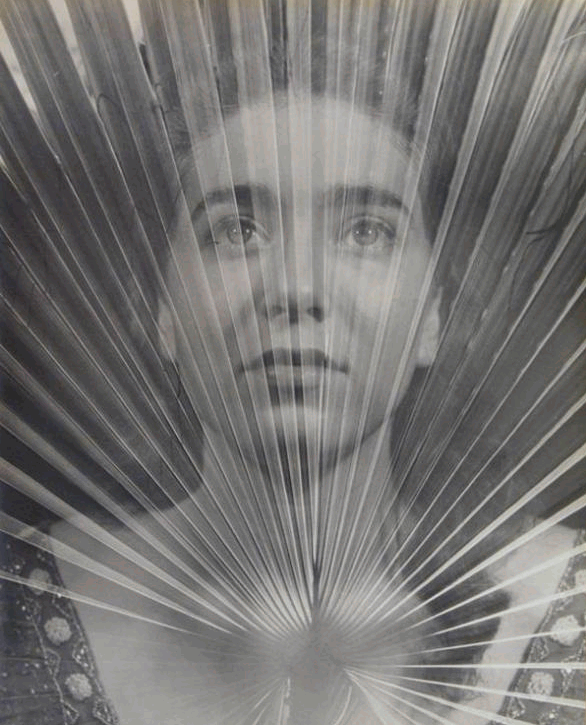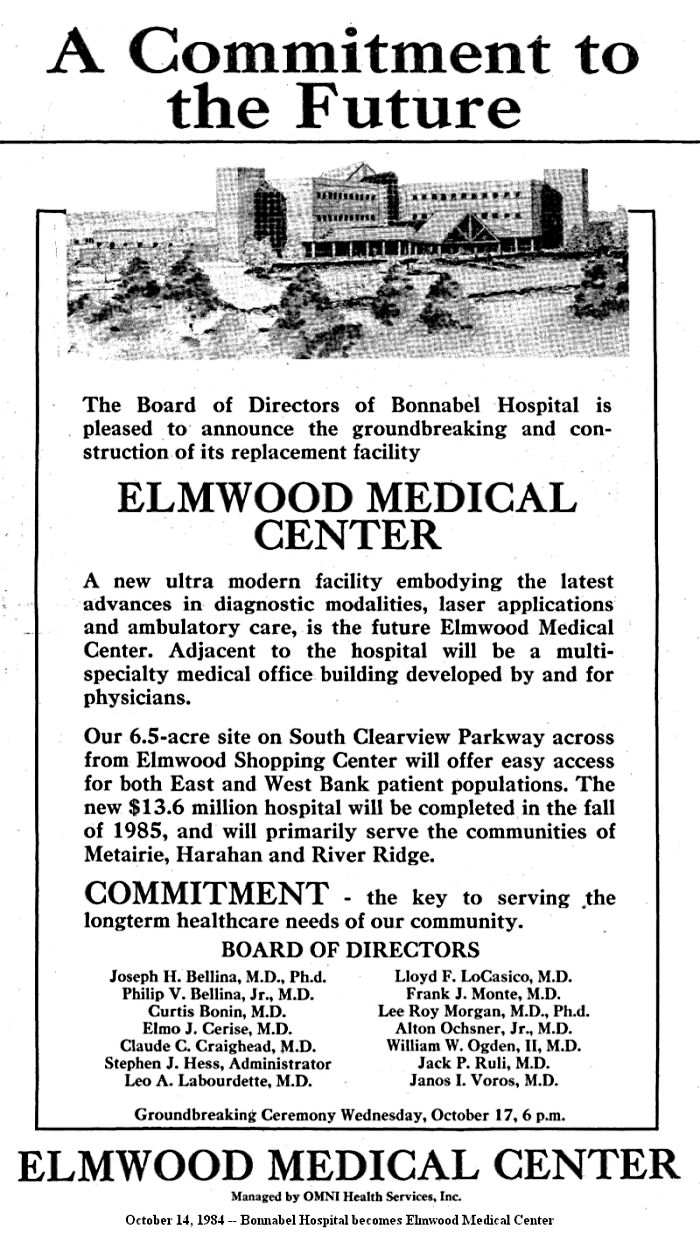|
Today in New Orleans History |
|
|
October 14

 To receive an update for each day in New Orleans history,
join our facebook page - Today in New
Orleans History.
Dody was invited in 1949 to artistically participate with the remaining members of the photographic
organization Group f/64, a bastion of the emerging West Coast Photographic Movement. In 1950, she was also one of the founding members
of the non-profit organization that published the photographic journal Aperture in 1952, to which she was also a contributor. In 1952, she was co-awarded the prestigious Albert M. Bender Award (known informally in the West as the “Little Guggenheim”) which financed a year's work in photography. Her camera work
is represented in dozens of museums and private collections as well as in many photographic books and magazines. She also
participated in multiple solo and group exhibitions from 1948 through 2006 in the United States and Japan.  To receive an update for each day in New Orleans
history, join our facebook page
- Today in New Orleans History
In 1946 plans were submitted by architect Sol Rosenthal for the $100,000 Metairie Hospital at 310 Codifer
Boulevard which was opened with 30 beds in 1947 by Dr. William Kohlmann Gauthier under the auspices of the New Orleans-Metairie
Hospital Foundation (which advertised typhoid inoculations the same year). It is pictured here during the 1940s. Twenty
new beds were added in 1951. The hospital expanded in 1953 with the addition of a two-story 36 bed air-conditioned wing built
at a cost of $55,000 and designed for “care of aged patients” for a fee starting at $175 per month. In 1956 a
new “chronically ill wing” (at $135 per month minimum) was added. By 1963 the hospital was again expanding with
30 doctors in practice. In 1965 a two-story 8,000 square-foot wing named for Thurston B. Martin (vice-president of New Orleans-Metairie
Hospital Foundation and president of First National Life Insurance Company) included 40 new beds. A 1967 $1,000,000 expansion
brought the bed total to 130 and the following year Dr. D.T. O'Quinn was named chief of Staff over 65 physicians. By 1969
Metairie Hospital's holdings stretched across the block to reach 1605 Metairie Road. In 1971 long range plans to make it
a complete medical complex were announced. The same year Dr. Lawrence O'Neil was elected president of the medical staff
who had cared for 7000 patients during the prior 12 months. 1973 brought a new outpatient clinic and in 1974 the bed count
reached 125. An Alcohol Recovery Unit was added in 1979. Metairie Hospital's
appeal as a modern and complete medical facility began to falter with the opening of Lakeside and East Jefferson Hospitals.
The bed count shrunk to 105. In 1981 Dr. Gauthier's estranged wife Betty Jane Haydel claimed that the non-profit corporation,
(including all holdings) which was organized in 1945 and of which she was an original officer, should be liquidated, dissolved,
and sold as part of the community property divorce settlement. Plans Halted In 1982 the hospital
was sold for $2.6 million to Omni Health Services in partnership with several local doctors headed by R. Alton Ochsner Jr.
who was to be the chief of surgery. It was renamed “Bonnabel Hospital”. Plans were announced for renovation,
expansion, and eventual replacement of the facilities. In February of 1983 some 300 opposing residents appeared before the
parish council which voted unanimously to block the hospital plans. Elmwood
Medical Center
Born in New Orleans on October
14, 1930, musician Robert Parker started his career as a saxophonist, playing with Professor Longhair on his hit
"Mardi Gras In New Orleans" in 1949. Over the next decade, he played with most of New Orleans' musicians, including
Fats Domino, Irma Thomas, and Huey "Piano" Smith. By 1958, he had started recording
solo, having a local hit with the instrumental "All Night Long". In 1965 he signed for Nola Records,
and had his biggest hit with Barefootin' in 1966. Although he continued to record,
he failed to repeat his success in terms of sales, and his recording career effectively ended in the 1970s. However, he
continued to perform and tour for many more years, remaining especially popular in the UK. In April 2007, in recognition
of his contributions to Louisiana and national music, Parker was inducted into the Louisiana Music Hall of Fame. Henry Creamer (June 21, 1879 – October 14, 1930) was an American popular song lyricist.
He was born in Richmond, Virginia and died in New York. He co-wrote many popular songs in
the years from 1900 to 1929, often collaborating with Turner Layton, with whom he also appeared in vaudeville. Creamer
was a co-founder with James Reese Europe of the Clef Club, an important early African American musicians and entertainers
organization in New York City. "'Way Down Yonder In New Orleans" w. Henry
Creamer m. Turner Layton (1922) New Orleans police chief David Hennessy led a crackdown against local mafiosi, he was assassinated on October 14, 1890. After the alleged murderers were found not guilty in March 1891, a mob stormed the jail and lynched eleven of them. Spencer Williams (October 14, 1889 – July 14, 1965) was an American jazz and popular music composer, pianist, and singer. He is best known for his hit songs "Basin Street Blues", "I Ain't Got Nobody", "Royal Garden Blues", "I've Found a New Baby", "Everybody Loves My Baby", "Tishomingo Blues", and many others. death in Flushing, New York on July 14, 1965. His hit songs include "Basin Street Blues", "She'll Be Comin Around That Mountain", "I Ain't Got Nobody", "Royal Garden Blues", "Mahogany Hall Stomp", "I've Found a New Baby", "Everybody Loves My Baby", "Shimmy-Sha-Wobble", "Boodle Am Shake", "Tishomingo Blues", "Fireworks", "I Ain't Gonna Give Nobody None of My Jelly Roll", "Arkansas Blues", "Paradise Blues", "When Lights Are Low","Dallas Blues", and "My Man o’ War". Williams was inducted into the Songwriters Hall of Fame in 1970 Joseph Francis Rummel, born on October 14, 1876 in Steinmauern, Baden, was
bishop of the Diocese of Omaha, Nebraska (Mar. 30, 1928 - Mar. 9, 1935) and Archbishop of the Archdiocese of New Orleans
(Mar. 9, 1935 - Nov. 8, 1964). By October 1962, Rummel was eighty-six years old, in declining health, and almost completely
blind from glaucoma. Nevertheless, he left New Orleans for Vatican City to attend the first session of the Second Vatican
Council. Archbishop Joseph Rummel died in New Orleans on November 9, 1964, at the age of eighty-eight. He was succeeded
by John Cody, the Coadjutor Archbishop (1961–1964). Archbishop Rummel is interred under the sanctuary at Saint Louis
Cathedral in the French Quarter. Archbishop Rummel was the Archbishop of New Orleans for twenty-nine years, through a world
war, and the beginning of the Civil Rights era. His Youth Progress Program had a profound impact on education in the city
of New Orleans. and his leadership ended racial segregation in the churches and the schools of the Archdiocese.Archbishop
Rummel High School in Metairie is named after him. Francis Redding Tillou Nicholls (August 20, 1834 – January 4, 1912) 28th Governor of Louisiana
Nicholls joined the Confederate Army in 1861 and participated in the First Battle of Bull Run and in the Shenandoah Valley
Campaign in Virginia, where he lost his left arm. On October 14, 1862, Nicholls was promoted from lieutenant colonel
to the rank of brigadier general and given command of a brigade of Louisiana infantry.
During the Battle of Chancellorsville, Virginia, in May 1863, a shell ripped off Nicholls' left foot Mark S. Polhemus (October 14, 1860 – November 14, 1923)
nicknamed "Humpty Dumpty", was a Major League Baseball player. Polhemus started the 1887 season with Haverhill of
the New England League. He hit .456 in 51 games and was then acquired by the major league Indianapolis
Hoosiers. However, he hit and fielded poorly and only saw action in 20 games for the Hoosiers. In 1888, he went back
to the New England League with the Lowell Chippies. He hit .301 and led the Chippies with 14 home runs in just 75 games. In
1889, he played for the New Orleans Pelicans of the Southern League; he had another good season at the plate, leading the
league in batting average, hits, doubles, and runs scored. New Orleans won the pennant. |
|
|

To receive an update for each day in New Orleans history,
join our facebook page - Today in New
Orleans History.
Analytics |



